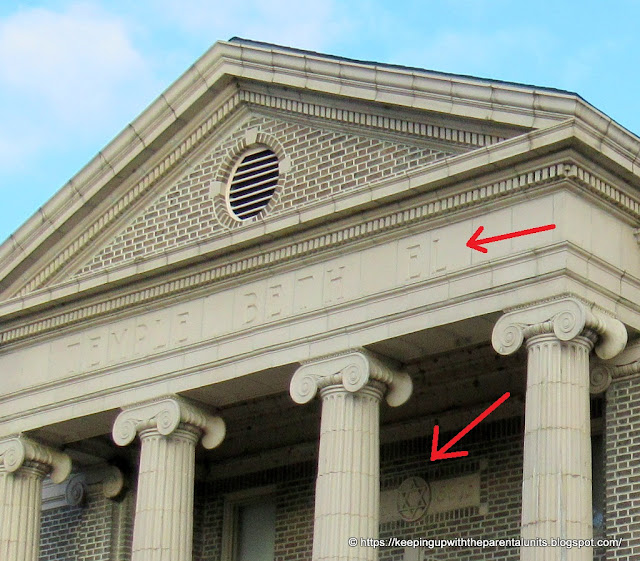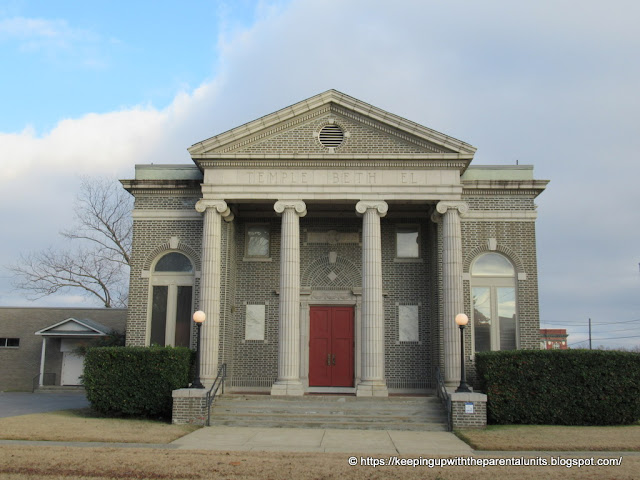The State of Arkansas is investing heavily in the Delta Cultural Center (DCC) to bring tourism to the town. We had just taken some pictures of the Pillow Thompson House (not a shul)
and were on our way to “the historic downtown” when we saw a building on the corner that was clearly a shul: The mogen dovid and the name “Temple Beth El” were dead giveaways.
We learned from a dial-in audio tour
that the building was built in 1916 and donated to the DCC in 2006 to be renovated for use as a non-sectarian performing arts center. Later at the DCC museum, I asked if we could see the inside of the Temple, and a DCC employee, Richard Spilman, said yes. We followed him to the former Temple and he gave us a personal tour.

History: Jews first settled in Helena in the early 1840’s and Congregation Beth El was formed in 1867. In 1875 they joined the Reform movement, and in 1880 they dedicated a building. Beth El did not have a rabbi until 1879, and before then a local Methodist minister sometimes conducted funerals or weddings. Like other small, rural communities they had trouble finding and keeping rabbis who left for bigger cities and salaries. Between 1879 and 1960, they had 21 rabbis. In 1916, they dedicated a new building, the one we saw, with a $4,000 organ, which was retained and upgraded by the DCC.
Although Beth El attracted Jews from smaller towns in the area, as Helena began to decline economically, Beth El’s membership shrank as well. In 1967, they still had 68 families, but by 2006, they decided to donate the building to the state. Many of the religious artifacts were given to other congregations in the south.
McGehee
We stopped in McGehee to visit the World War II Japanese American Internment Museum, but it was closed because of Covid. But there was a map of the town outside with points of interest, including churches. Lill thought that Meir Chayim Temple was an odd name for a church, so we drove the few blocks to check it out (the town wasn’t much bigger). Although the building still had the Meir Chayim Temple name over the door, the Ten Commandments with Hebrew lettering above it and a cornerstone in Hebrew from 1947, there was a sign out front that indicated it is now the New Life Ministries Christian Center.
History:
The southeastern region of Arkansas saw a Jewish influx in the early 1900s and after World War I. In 1927, Jews from McGehee, Dermott, and other nearby towns started having informal services in churches and other buildings in McGehee. In 1946, they formed the Beth Chayim Congregation. The name was changed to Meir Chayim Temple in honor of a fallen Arkansas City World War II sergeant. The building was designed by members and due to materials shortages during the war, lumber was made from trees on members’ properties. The building, with a 150-seat sanctuary, Sunday school rooms, a recreation hall, and a kitchen was dedicated in 1947.
Although the temple had more than 100 families at one time, they held their final service on June 17, 2016, because as one 72-year-old member said: “the older people have died and the younger ones moved to the city and it's just three or four of us that are left." I could not find out when they sold the building to the church.
















No comments:
Post a Comment